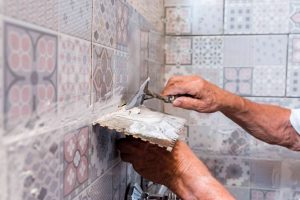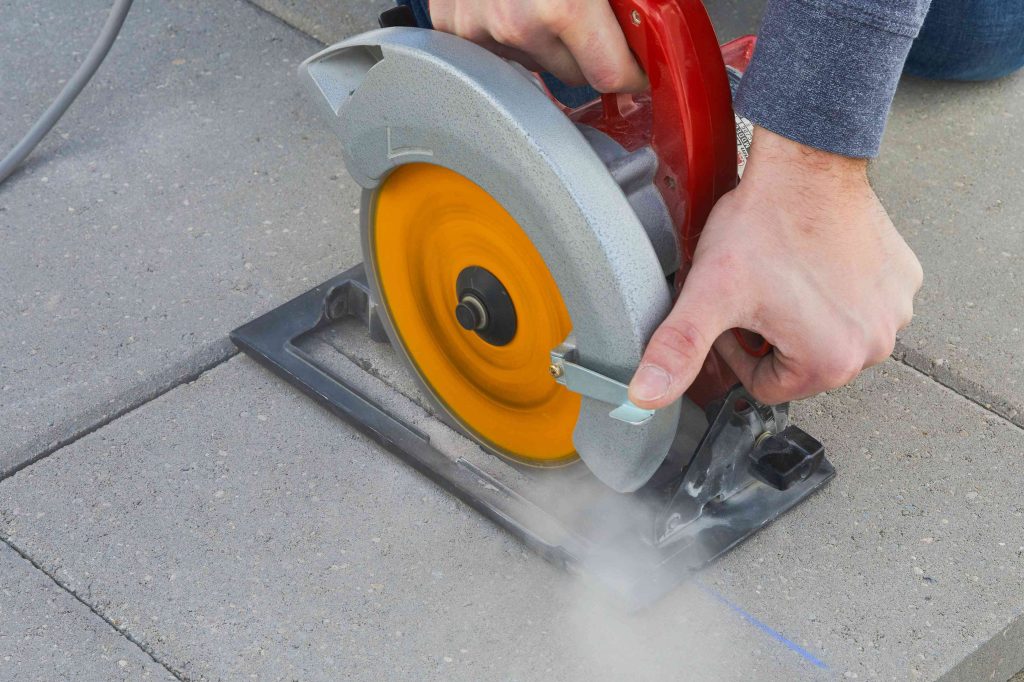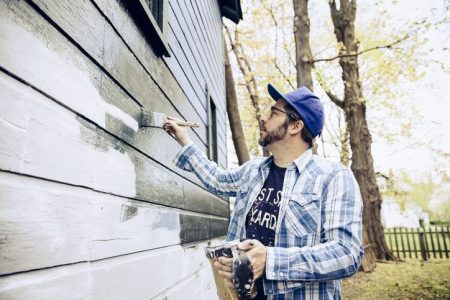Saw cuts are a used to create control joints in concrete, which help control where cracking occurs due to shrinkage. The cuts should be made at a predetermined spacing and only after the concrete has obtained sufficient strength but before internal cracking begins. Therefore, the timing of saw cuts is critical. Determining when to make cuts depends on many factors, including the type of admixtures and aggregate used in the concrete, the air temperature, and the concrete’s mix design.
When to Saw-Cut Concrete
In addition to the concrete mix and the weather conditions, determining when to saw concrete is based on the concrete’s hardness as well as the type of cutting equipment used to make the saw cuts. Cutting too early causes raveling, an effect created by the saw blade pulling the aggregate out of position, leaving a messy, weakened edge along the cut. This also causes undo wear on diamond concrete saw blades. Sawing too late can result in uncontrolled cracking as the concrete contracts during curing.
Saw cutting can start anywhere from three to six hours after the concrete is poured, depending on the weather conditions. The best way to determine whether the slab is ready is to make trial cuts to check for raveling. Saw cutting should start as soon as the raveling stops during these trial cuts.
Some contractors delay sawing to protect their equipment and saw blade to reduce blade abrasion. There are several types of saw blades that can be used, depending on the concrete type and how soon the cuts can be started. Other factors that can lead to excessive blade wear and joint raveling include:
- Pushing the blade too hard
- Saw cutting at high speed
- Using a saw with a bent spindle
- Using an inappropriate saw blade
Where to Saw-Cut Concrete
Before you start saw cutting concrete, is important to select where these cuts will be done. It is recommended to start saw cuts on or at the center of column lines. Joints shall be spaced at 24 to 30 times the slab thickness but this need to be confirmed by a structural engineer. Joint spacing normally ranges between 12 to 18 feet depending on the amount of reinforcement the slab has. If you are using high shrinkage concrete, you might want to decrease the cut spacing. Here are other factors that will help you determine where to saw cut:
- Try to form square patterns
- Make saw cuts continuous
- Select an area that doesn’t have continuous steel reinforcement from one slab or square to another.
- It is better to have smaller cracks than to increase cost by having and maintaining several joints.
- Under hot weather conditions, you might want to try forming a larger square and then cutting interior joints. By doing this you will be controlling fast setting concrete cracks in larger areas.
How to Saw-Cut Concrete
Factors such as curing techniques, slab thickness, and base type must be analyzed before selecting where joints should be cut. Once you’ve laid out the joints to be cut, mark them using a chalk line. If you’re using water cutting equipment, make sure that the water is running all the way down to the blade. Allow the blade to reach the required depth, then start walking or moving the equipment following the chalk mark. Here are some recommendations when sawing concrete:
- Do not twist the saw blade.
- Do not let the blade spin in the cut, as this will increase wear on the bond.
- When cutting concrete with heavy rebar, use blades with soft metal segment bonds.
- Always use the required PPE (personal protective equipment).
How Deep to Make Saw Cuts
A good rule of thumb is to cut the joints one-quarter to one-third the slab thickness. For a 6-inch-thick slab, that means cutting 1 1/2 to 2 inches deep. Ensure that the saw cut depth meets the structural engineering specifications. If the joint is too deep, aggregate interlocking will not be sufficient to transfer loads. If the saw cut is too shallow, random cracking might occur.
Read the full article here














